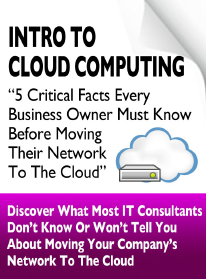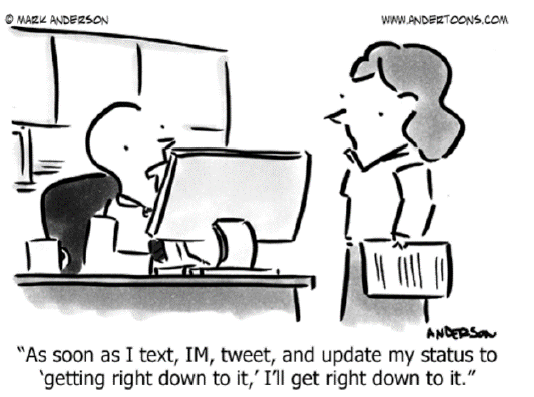
How The Cloud Could Have Averted Disaster For Hundreds Of Companies Affected By These Catastrophes
Two months after hurricanes Harvey and Irma wreaked havoc on coastal cities, large swaths of the United States are still reeling from their impact. In their wake, the nation has been moved as we witness numerous communities unite to rebuild, finding their bearings among the millions of dollars of flooding damage and rampant destruction. Though the wonderful people of these cities will persevere, these wounds will leave indelible scars on the affected areas.
Even with the concerted efforts of thousands of volunteers and community members alike, Russel Honore — the former Joint Task Force Katrina commander — told the FOX Business Network that an estimated “40% of small businesses don’t survive” widespread natural disasters like hurricanes. Part of this is due to raw damage, lack of proper insurance or business infrastructure simply being washed away in the flood. Other businesses can’t afford to hemorrhage money as they wait for the electricity grid to come back online, and are forced to shutter operations for good.
However, what is even more commonly fatal to companies both big and small is the loss of vital data. Many businesses can handle cleaning up flood damage, and they regain their footing quickly after a natural disaster. Still, if on-site servers, computers or network infrastructure soaks up the brunt of the water, then it’s going to be difficult, if not impossible, to get the company back to a pre-disaster point. If a company’s main server fails, it can mean thousands of hours of hard work down the drain, the loss of most clientele and hundreds of hours of downtime spent desperately trying to recover key data, which usually remains lost forever.

But if, prior to catastrophe, a business has migrated their precious data to the cloud, they’re going to have a much easier time getting back on their feet and going straight to work. Even if an entire business is leveled, with cloud computing, employees can easily access the data central to the company’s operation and keep it afloat in the interim.
Most cloud services back up your data with several levels of redundancy, making it almost impossible to lose it all, regardless of what may come. Whether it’s earthquakes, hurricanes or solar flares, you can rest easy knowing that your data is safe and sound and ready for you to access it. It’s a much safer, more secure way to go than having a server lurking in your back office, where it’s far more exposed than you might think.
This principle applies not only to environmental disasters, but to numerous other ways companies lose data each and every day. Whether it’s a disgruntled employee damaging or stealing precious data, or a hacker snaking their way deep into your systems and holding them for ransom, it’s all too easy to lose localized data. Some business owners feel uncomfortable holding their data off-site, citing security concerns, but it’s quite the opposite: the cloud sidesteps these concerns almost entirely, guarding your data behind highly secure cloud-based computing solutions and providing you with numerous backup options. Not to mention, according to a 2012 Alert Logic report, “onpremises environment users actually suffer more incidents” than those that use the cloud, and also suffer “significantly more brute force attacks compared to their counterparts.”
While it’s true that not every business is right for the cloud, it’s certainly something business owners should look into if they want to ensure the longevity of their company. If you’re interested, sign up to get our free cloud computing report.
What’s New :
What You Can Learn From Stanley
McChrystal’s Team of Teams
In 2004, General Stanley McChrystal assumed command of the Joint Special Operations Task Force and was tasked with curbing Al Qaeda’s presence in Iraq. When it became clear that new tactics were necessary — Al Qaeda was a decentralized network that could disappear into the population at will — he completely restructured the task force into a body that
used highly transparent communication lines, along with a decentralized decisionmaking structure. In his book, Team of Teams, he catalogues this transformative process, providing vital nuggets of information for any business owner looking to succeed today.
Free Report Download: If You Are Considering Cloud Computing For Your Company, DON’T,
Until You Read This …

If you are considering cloud computing or Office 365 to save money and simplify IT, it is extremely important that you get and read this special report, "5 Critical Facts Every Business Owner Must Know Before Moving Their Network To The Cloud."
This report discusses in simple, nontechnical terms the pros and cons of cloud computing, data security and how to choose a cloud provider, as well as three little-known facts that most IT consultants don't know or won't tell you about cloud computing that could end up causing you MORE problems and costing you more money than you anticipated. Even if you aren't ready to move to the cloud yet, this report will give you the right information and questions to ask when the time comes.
Disrupt Yourself: Being The Game Changer
Change is a constant. Ho-hum, right? Everybody knows that. But, if you really do expect change, what are you actually going to do about it?
If you’re committed to making your best even better, you won’t just react to change. You’ll create it.
In my book The Potential Principle, I encourage readers who want to reach their best to focus on four areas of the Potential Matrix: the performing quadrant, the learning quadrant, the thinking quadrant, and the reflecting quadrant. But there’s one tool that you can use in all of these areas at once to create breakthrough improvement and move closer toward realizing your full potential. The first tool is to disrupt yourself before someone or something else does it for you.
If change hits you from some outside source — say, a disruptive technology, company or nation — you’ll find yourself scrambling to adapt. You’ll struggle to catch up rather than strive to stay ahead.
But what if you’re the one bringing the change? What if you’re the one driving innovation? That makes you the game changer!
Think about the habits, practices and routines in your life that need to be shaken up a bit. It’s human nature to become complacent and keep doing things the way you’ve always done them. But people who are dedicated to self-improvement unsettle complacency, combat mediocrity and challenge the status quo, both in themselves and in those around them. They keep growing, and they keep the people in their families and companies growing as well.
Are you doing things that used to succeed but no longer work as well, if at all? Are you spending valuable time on unproductive activities when that time could be better invested elsewhere?
What is the ratio between your “daydreaming” and your “daily doing?” You can plan and prepare too much if it prevents you from taking action. And sometimes, it’s good to recognize that a daydream is really just a fantasy, and you’d be better off focusing your energy on more important goals.
Maybe you’re spinning your wheels in unhealthy relationships. This can be the hardest area of your life to disrupt. But if someone is influencing you negatively, you might need to change, limit or end your relationship with them.
Disrupting yourself will make you stronger. The path to progress and success isn’t a leisurely walk through the countryside. It’s a rocky, steep path of resistance — and resistance develops muscle. Breaking up patterns and unsettling stable but humdrum practices can result in new enthusiasm, energy and opportunities.
If you want to be the best you can be, don’t let someone or something else change your game. Be proactive and disrupt the things that need to change in your life yourself.

Services We Offer
Business Continuity | Server Support | Network Security | Desktop Support | Cloud Computing | VoIP Solutions | Hosted Solutions | Disaster Recovery Planning | Give us a call today at 614-763-2911 to discuss your needs.
Shiny New Gadget Of The Month:

Security Cameras Just Got Cheaper
The average American household is packed to the gills with expensive electronic equipment and a startling amalgamation of pricey knickknacks, so investing in home security is an attractive investment. And these days, you don’t have to shell out a sum equal to the stuff you’re protecting to get peace of mind.
Take the Kodak 180-degree Panoramic HD WiFi Security Camera, for example, a high-end security camera you can pick up right now for just under 70 bucks (regularly priced at $149.99). Place the camera anywhere in your house, and it’ll automatically record motion-triggered video clips straight to the cloud with its 180- degree lens, accessible on any Internet -enabled device. The camera uses wide dynamic range to automatically adapt to changes in lighting, ensuring that it doesn’t miss a thing. Perhaps best of all, you can check in on the camera’s feed at any time, streaming its HD video straight to your phone or computer.
Here’s A Perfectly Legal Way To Save A Bundle Of Money On Taxes, Computer Hardware And Support … But You Have To Act FAST! When you’re running a small business, you need to stay abreast of every possible money-saving strategy. That’s why, this year, you should look into the Section 179 Deduction small-business tax incentive. Section 179 allows a business to write off an entire equipment purchase for the year it is purchased, rather than writing a portion off for the next few years. According to the website for the deduction, “all businesses that purchase, finance and/or lease less than $2 million in new or used business equipment during tax year 2017 should qualify” for the deduction. The only stipulation is that the equipment purchased must be “placed into service in the same tax year that the deduction is being taken.” This has the potential to save small businesses thousands of dollars. Just make sure that the equipment is both purchased and put into service by the end of this year, December 31, 2017! Section179.org.

3 Ways Technology Can Increase Your Home’s Value AND Save You Cash at the Same Time Implementing tech upgrades into your home — taking one more step toward the coveted “smart home” — can be a good time, but beyond that, it’ll save you precious time and money every day. With smart lighting, you’ll never accidentally leave a light on again, which will save you a lot more than you might think over time. If you have a smart thermostat, you’ll have that much more control over the temperature of your home, easily making adjustments with the touch of a button and reducing heating and cooling bills. Not only that, but more permanent installations like solar panels can drastically increase the value of your home while reducing your carbon footprint and your utility bill at the same time. Smart homes may seem like a luxury, but in fact, they’re a lot more cost-effective than they appear. inc.com 8/21/17





